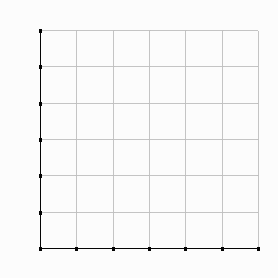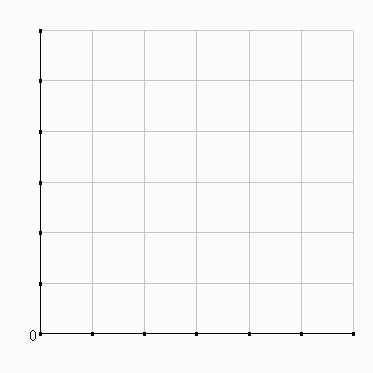 |
 |
V. General equilibrium with competitive markets
We've looked at consumers and how they allocate their
budgets.
We've looked at producers and how they choose their inputs to cut
costs.
We've looked at competitive firms and how they choose how much to
produce.
Now time to put the pieces together
Keep in mind the importance of comparing.
Because of scarcity, we never have as much as we want. We must always
value what we've got relative to what else we might have.
An economist's most common response to a question: "Compared to what?"
This is microeconomics at its most elegant
Economic efficiency
The goal we have the most to say about
First, what is economic efficiency?
Layperson: no waste.
More formally: economic
efficiency => Pareto optimal
An allocation is Pareto optimal when it is impossible to make anyone
better off without making someone else worse off.
To achieve a Pareto optimal allocation requires
satisfying
3 efficiency conditions:
(1) Output efficiency (OE): What to produce?
(2) Input efficiency (IE): How to produce?
(3) Exchange efficiency (EE): For whom to produce?
We'll address the efficiency questions in a general equilibrium context.
Recall what that means: Partial equilibrium analysis
looks at one market at a time, using S&D, measuring welfare with CS and PS.
Ex: fat-free cookies.
Limitations of partial equilibrium:
(1) What if the fat-free market equilibrium we see is
because of a tax on regular cookies?
Can't see that distortion with partial equil.
(2) also, partial equilibrium only shows output. Doesn'‘t get behind S&D. How do we know that minimum costs have been achieved?
General equilibrium analysis
considers the relationship between markets.
>1 market at a time--most broadly, for all markets
together
Here, we'll move to a 2x2x2 market. 2 goods; 2 inputs, 2 consumers
3 key relationships
One from each part of course so far: X-rays (X) and Yogurt (Y)
Utility maximizing by consumers -->
(1)
MUx/MUy = MRS = Px/Py
Relative relative of X = relative cost of X
Cost minimizing by firms -->
(2)
MPL/MPK = MRTS = PL/PK
Relative productivity of L = relative cost of L
Profit maximizing by firms under perfect competition
-->
Px=MCx
and Py=MCy =>
(3) Px/Py = MCx/MCy
Relative price of X = relative cost of X.
These relationships turn out to capture the 3
conditions for efficiency, with the order reversed:
(1) addresses for whom to produce?
(2) addresses how to produce?
(3) addresses what to produce?
This deals with the efficient way to distribute to
the members of society any given set of goods.
Assumes that the actual bundle
available to divide up is given--production is over.
The goal is to get the goods to their highest-valued uses and users
Exchange occurs between consumers
A distribution of output is efficient if it is impossible for an
exchange between consumers to make some consumer better off without making some other
consumer worse off.
1. Geometry: the Edgeworth box for exchange
Example: Halloween
2 consumers: Machiko (M) and Cami (C)
2 goods: X=candy bars (B)
Y=other sweets (S)
Each has some initial bundle = their endowment of B and S.
Um = U(Bm, Sm)
Uc = U(Bc, Sc)
Bm + Bc = Bt
(total)
Sm + Sc = St
| Example: | B | S |
| M | 60 | 60 |
| C | 60 | 60 |
| T | 120 | 120 |
Indifference maps--the trick: measure Cami upside down:
 |
 |
Make (Bt,St) the origin for Cami.
Edgeworth box: measures M from the lower left corner and C from the upper right corner
| Consider
the set of allocations which would be efficient in exchange: Step 1: Choose U1c ? Given U1c, what consumption bundles are available to Machiko? So points inside the box and on U1c are Machiko's consumption possibilities. ? How do we figure out which bundle is most satisfying to Machiko? Step 2: Find the highest attainable Um, given Uc (=> Um tangent to U1c) |
 |
Repeat steps 1 and 2 forever. Result
=
Contract curve (CC): the set of all Pareto optimal consumption bundles
All the points on CC are efficient in
distribution.
Note: all along CC: MRSm = MRSc
Example: At point 1, suppose MRSm = MRSc = 4.
=> both are willing to trade 4s for 1c.
Both place the same relative marginal value on chocolates
compared to other sweets.
Note 1: A Pareto optimal distribution is not unique. All points on CC are Pareto optimal.
Note 2: Pareto optimality says nothing about equity:
The origins are Pareto optimal despite one consumer being completely
destitute.
Suppose instead we are off the contract curve.
Do "Achieving exchange efficiency" worksheet
Example: At a, MRSm < MRSc
The shaded area represents consumption bundles which
both consumers prefer to point a.
Called a lens: = bundles
attainable through exchange which raise the utility of at least one consumer without
reducing the utility of the other.
= Pareto superior allocations.
2. Exchange efficiency and competitive markets
In practice, consumers don't bargain much; they just go to the market and buy.
However, unrestricted competitive markets promote exchange efficiency since consumers face equal market-clearing prices for equivalent products.
=> MRSyou = Px/Py = MRSme
Frank: An equilibrium produced by competitive markets will exhaust all possible gains from exchange
--Careful: must be identical goods.
Gas costs more in the mountains because of extra transport
costs--consumers can't gain from exchange in this case.
Counterexamples: usually show up with
--price controls
--price discrimination
| Example: faculty discounts at the bookstore s = students MRSs > MRSf ? Can you think of how we can both end up better off? |
 |